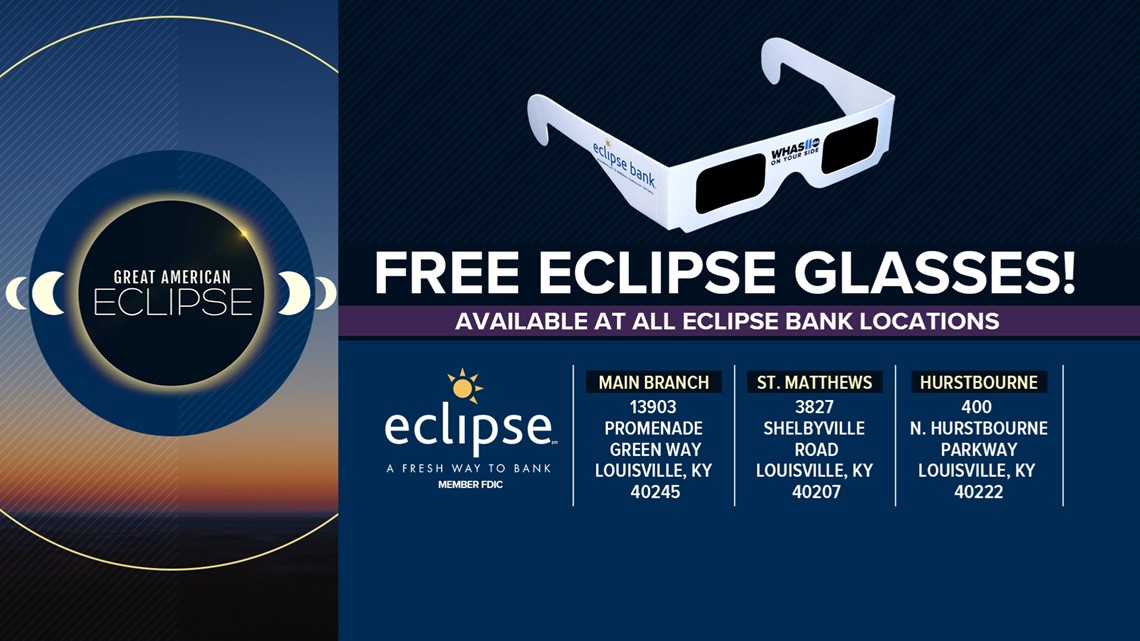LOUISVILLE, Ky. — The Total Solar Eclipse will cross over North America - passing over Mexico, the United States, and Canada - on Monday, April 8, 2024.
On this day, millions of Americans will experience up to 4 minutes and 27 seconds of darkness in the middle of the day.
And it's never too early to plan where to get your glasses!
You can get your free, solar-safe glasses right now at these Eclipse Bank locations in Louisville:
- Main Branch - 13903 Promenade Green Way
- St. Matthews - 3827 Shelbyville Road
- Hurstbourne - N. Hurstbourne Parkway


There is a limit of two pairs per person.
According to NASA, states in the path of totality include Oklahoma, Arkansas, Missouri, Illinois, Kentucky, Indiana, Ohio, Pennsylvania, New York, Vermont, New Hampshire and Maine. Small parts of Tennessee and Michigan will also experience the total solar eclipse.
Louisville is not in the path of totality; however, you won’t have to travel far to get the full experience.
If you’re wanting to stay in Kentucky, Paducah is an option, but the short 1 minute, 31 second duration of totality may not be worth the drive.
For longer durations, Indiana is the place to be. Bloomington will experience the longest period of darkness in the area at 4 minutes, 2 seconds.
Aside from a few cities in Texas, Indianapolis is the next largest city in the path of totality and you can expect just about four minutes of the moon blocking the face of the sun.
"Viewing any part of the bright Sun through a camera lens, binoculars, or a telescope without a special-purpose solar filter secured over the front of the optics will instantly cause severe eye injury," NASA explained. "When watching the partial phases of the solar eclipse directly with your eyes, which happens before and after totality, you must look through safe solar viewing glasses (“eclipse glasses”) or a safe handheld solar viewer at all times. Eclipse glasses are NOT regular sunglasses; regular sunglasses, no matter how dark, are not safe for viewing the Sun."
Here are some eclipse safety tips provided by NASA:
- View the sun through eclipse glasses or a handheld solar viewer during the partial eclipse phases before and after totality.
- You can view the eclipse directly without proper eye protection only when the moon completely obscures the sun’s bright face – during the brief and spectacular period known as totality. (You’ll know it’s safe when you can no longer see any part of the sun through eclipse glasses or a solar viewer.)
- As soon as you see even a little bit of the bright sun reappear after totality, immediately put your eclipse glasses back on or use a handheld solar viewer to look at the sun.
Make it easy to keep up-to-date with more stories like this. Download the WHAS11 News app now. For Apple or Android users.
Have a news tip? Email assign@whas11.com, visit our Facebook page or Twitter feed.

